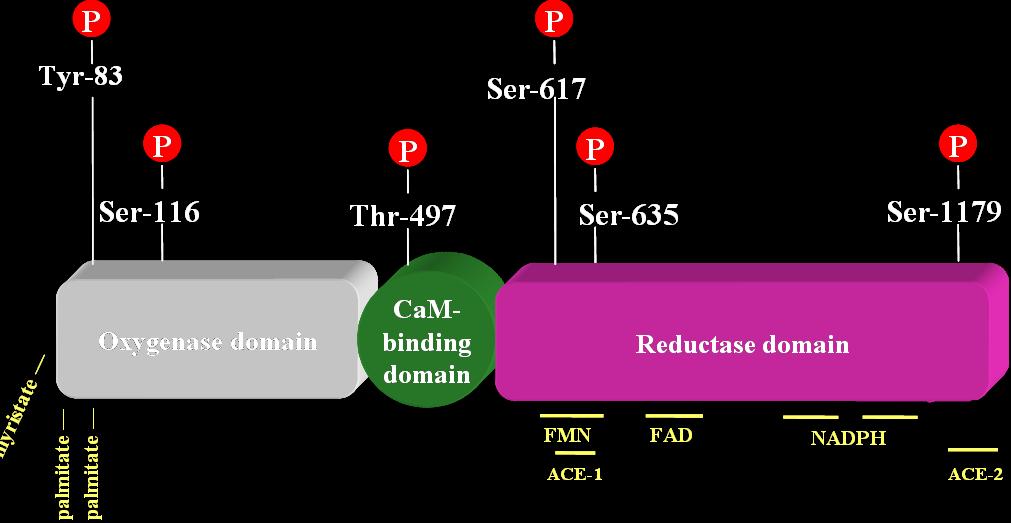eNOS Regulation

- Post-translational regulation of endothelial nitric oxide synthase (eNOS) primarily by phosphorylation and protein-protein interactions.
- Effects of exercise on endothelial and smooth muscle nitric oxide synthases (NOS) and stress protein expression, activation and signaling.
- Role of heat shock/stress proteins in the cardiovascular system, particularly in myocardial and vascular dysfunction associated with aging, hypertension, diabetes, and ischemia/reperfusion injury.
Physical inactivity, like hypertension, smoking and high cholesterol is a major risk factor for coronary heart disease and the most prevalent of the four. Although exercise has been shown to provide a protective effect against high blood pressure and the development of atherosclerosis, the mechanism of this effect is unknown. In addition, while it is apparent that both nitric oxide synthases (NOS) and stress proteins play an important role in cardioprotection and vascular function, little is known about exercise-induced changes in NOS and/or stress protein expression in the vasculature. Using animal models of exercise and various disease states, we can evaluate exercise-induced changes in gene and protein expression in the cardiovascular system and examine their role in preventing endothelial dysfunction in aging, hypertension, diabetes and ischemia/reperfusion. In addition, potential components of exercise-induced changes can be evaluated using cell culture models of shear, heat and oxidative stress.
Previously, we have evaluated changes in myocardial stress protein expression during both acute and chronic exercise in treadmill-trained rats. These studies have demonstrated that temperature is a key factor in the exercise-induced cardioprotection and expression of stress proteins. More recently, we have examined the interaction between heat shock protein 90 (Hsp90) and the endothelial nitric oxide synthase (eNOS) in bovine aortic endothelial cells. The results of these studies clearly demonstrate the importance of this interaction in maintaining normal eNOS function. In addition to traditional endurance training typically associated with cardiovascular health, we are also evaluating resistance exercise training as an alternate mode. Loss of muscular strength is a primary factor in the decline in quality-of-life with age and resistance training can help reverse that process. However, little is known about the effects of resistance training on endothelial dysfunction with age.
Our research goals, therefore, are to examine changes in the expression of these proteins and their interactions in various models of vascular dysfunction including aging, hypertension, diabetes and ischemia/reperfusion. Recent studies have suggested an uncoupling of Hsp90 and eNOS interactions under conditions of hypoxia and pulmonary hypertension. It remains to be determined whether this uncoupling occurs in other models of vascular dysfunction and whether the reversal of this uncoupling using various genetic approaches can prevent the development of vascular dysfunction. Furthermore, it remains to be determined whether the exercise-induced alterations in these proteins observed in my earlier work are part of the mechanism of exercised-induced prevention of vascular dysfunction.














